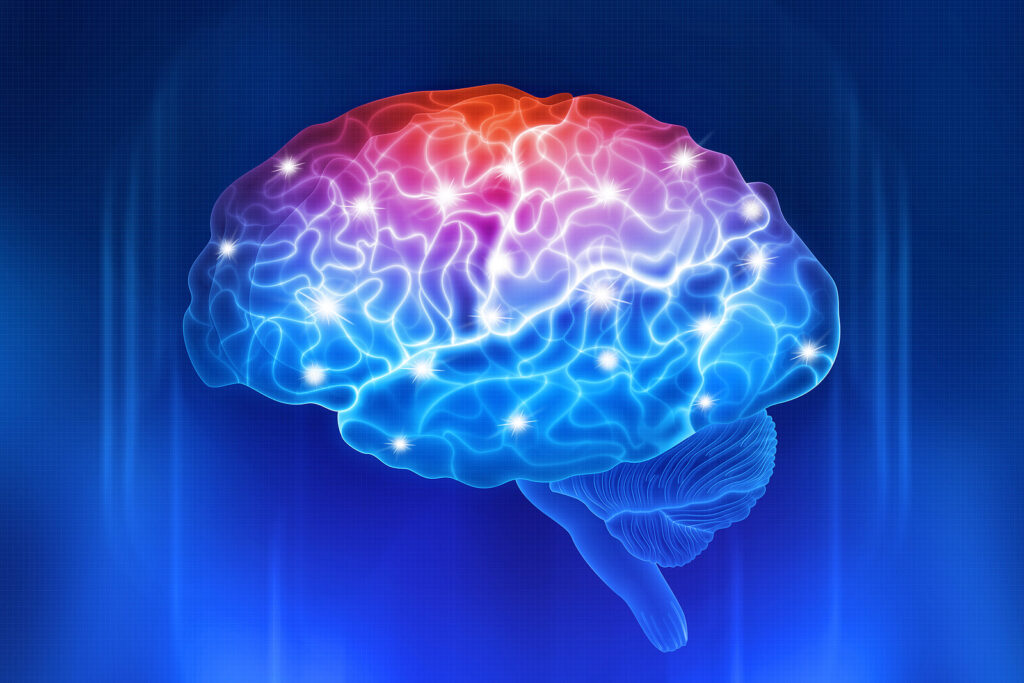
We know that chronic illness can take a toll on our quality of life. But what about the impact of chronic illness on the brain? It’s no secret that trauma is connected to autoimmune diseases, but how exactly does this connection work? In this blog post, we will explore the relationship between chronic illness, trauma, and the brain. We hope that by understanding this connection, we can better support those who are living with a chronic illness.
Glial Cells and Health
The brain is made up of many different types of cells, one of which is called glial cells. Glial cells make up about half of the brain’s total cell count and they play an important role in the immune system. In fact, when we experience trauma, it is the glial cells that are activated in order to help us.
By understanding glial cells, we can explain how the immune system and the brain work. This has such a significant impact on our comprehension of autoimmune disease and the connection between autoimmune disease and disorders of the brain. Furthermore, it has a significant impact on how we perceive the connection between trauma and brain problems. The areas of medicine and psychiatry have been through a significant paradigm change over the past seven years. So let’s just take a step back and frame this. And throughout the past century, it has been unequivocally established that the brain is not an immunological organ. Many of you may know that those who have autoimmune diseases are aware that the immune systems control their bodies, right? Too many environmental stresses, including infections, stressors, various pathogens, and environmental toxins, can start to change the body’s immune response if they occur frequently enough.
Where do macrophages come into play?
And the reason for this is that tiny cells in our bodies are known as macrophages—which are actually white blood cells that start to inflame or kill good tissue. Anyone who has an autoimmune condition understands how that functions and realizes that it’s actually called “friendly fire,” despite the fact that this has been widely accepted for a century. And actually, ever since Descartes, the philosopher for 300 years, who declared 300 years ago that the brain and the body were acting as church and state entities and that the brain was not under the control of the immune system, the theory of mind-body dualism has been prevalent. In fact, until seven years ago, the immune system did not control the brain, making it the solitary organ in the body.
The neuroscience field is changing to understand how chronic illness impacts the quality of life.
And it all comes down to our cutting-edge comprehension of the structure and behavior of this tiny cell known as the microglia. Researchers have held this belief about microglia since the 1920s, which is why the word “micro” appears in their name. They are microscopic and tiny. These were just monotonous housekeeping cells that removed dead neurons and catered to their requirements in the same manner as a movie star’s entourage would. So, researchers choose to disregard them. Simply said, they didn’t receive the same funding for research as neurons did. The scientific community’s showy darlings were neurons. Then, in 2012, Harvard scientists found that immune cells are not mechanical housekeeper cells.
They are one of the most potent immune cells in the human body, and they live in the brain. Just as white blood cells control the health of our bodies, microglia, control the health of our brains.
So what does this mean?
Autoimmune illness can develop in the body when white blood cells or macrophages notice that something is in balance once more. This could be due to a variety of mental stressors, poisons, or infections. Similar to how microglia, the brain’s white blood cells, change into two large, pack-man-like cells when they become overactive in response to too many stresses.
Where does trauma come into play with this?
We are aware that people who have experienced childhood trauma, start to have a lack of synaptic connection in significant brain regions. It’s been a mystery to science as to how and why those synapses are sculpted away why synapses go down, and why the brain goes dark in certain areas as a result of depression, anxiety, cognitive disorders, behavioral disorders, mood disorders, and later in life Alzheimer’s. And we know that those areas of the brain when those synapses go down it sets the stage for common brain disorders. This includes depression and anxiety. Therefore, neuroinflammation occurs when immune cells in the brain, called microglia, start to eat away at synapses.
What is the Clinical Definition of inflammation?

Now microglia also spit out neurotoxins when they’re overexcited and unhappy, but this raises a really interesting point. And that is that in the body, we think of inflammation as being red, hot, painful, and swollen. Right? That’s the clinical definition of inflammation. Imagine how we missed the fact that the brain can experience inflammation as well as the true function of these cells.
What is Neuroinflammation?
In the brain, neuroinflammation is the process by which immune cells start to overshape the synapses and connections in crucial regions of the brain that support thinking, mental clarity, feeling good, and having a good mood state. These connections, for example, between the hippocampus, where we store memories and process our emotions, and the amygdala, the brain’s fear center, can be seen.
I believe that patients really need to be aware of this. Therefore, it reframes our understanding of autoimmune disease in the body in light of the way that childhood trauma impacts both the body and the brain, and it shows how we may really become involved and use this science to alter how we approach recovery.
Many things can be predictors of chronic illness.
A study that was funded by the National Institutes of Health found that individuals who had experienced four or more types of trauma in childhood, such as abuse, neglect, parental mental illness, and household dysfunction, were more likely to develop the autoimmune disease as adults. This is not just an impact on quality of life. This is an impact that can last a lifetime.
Despite knowing this, women’s wellness still takes a backseat to men
So, when we look at the brain and chronic illness, we have to look at how trauma connects them. And I believe that this is one of the key ways that we can start to make a difference. But after 20 years of giving lectures, doing workshops, publishing books, holding book signings, and conducting interviews, I am aware that women are more commonly affected by these disorders. And I am aware from statistics that women are three times more likely than men to experience depression, bipolar disorder, autoimmune illness, and Alzheimer’s.
It truly disregards or omits to look at the distinctions in women’s bodies, which is why so many ailments have been examined more from the standpoint of men’s health and advertised as being for everyone. And while I both agree and disagree with you, I believe that a feminist perspective benefits everyone, not just women.
What should we talk about from this about chronic illness’s impact on quality of life?
In other words, when we look at the impact of chronic illness on quality of life, we need to consider how trauma connects them. And I believe that this is one of the key ways that we can start to make a difference.
What is happening to identify and further this research?
These particles can be detected, and microglial research is leading us in so many wonderful, uplifting directions. They are using this in their research to look at different levels of severity of concussion with the hope that it will help tell someone in a clinical setting that this concussion is more serious than we thought. However, there are many different things that need to be perfected in clinical trials before they can be used in everyday medical practice.
Neuroscience is unique and difficult to see unable to see it. Therefore, by measuring these microglial components in the circulation, we can determine not only the severity of a situation but also whether or not treatments are effective. In the future, it will be just mind-blowing to see how a doctor can look at these through blood tests. Allowing them to examine microglia, how active they are, and how much harm they may be causing. Which in turn determines which treatments are being tried here that are effective.
We are more resilient and plastic than we thought!
In light of this, there is some truly astounding news that is coming to light. Much like how our understanding of microglia reveals that the brain is far more plastic than previously thought and constantly adapts to its surroundings. It reveals that, contrary to what we previously believed, our brain is more plastic. when we introduce beneficial interventions. This is how I perceive things. We are aware of our five senses. However, we are now considering the brain’s immune system as a kind of seventh sense. Everything that is happening to us, everything that we feel, is actually being sensed by the brain’s immune system. We sometimes think of our sixth sense as our proprioception, the way in which we perceive our body in relation to space.
So that’s just a general way of thinking about this, that our brain is our seventh sense, that our brain’s immune system, but to be very specific because I know that as a consumer I want someone to be very specific. Researchers are working to help reboot microglia and bring them back to their angelic role. Let’s take a step back and say that the brain’s microglia are its Angels and Assassins. However, their regular function in the brain is to help safeguard our brain’s synapses, our millions of neurons, and our trillions of synapses from damage when they are triggered.
What does neuroscience say?
Researchers are discovering methods to restore microglia to their angelic function so they can serve as the brain’s good doctor. Microglia can also be thought of as the empress of the brain, according to another perspective. They are determining how synapses will interact and how strong the brain’s immune system, or the seventh sense, will be.
So, when we look at the impact of chronic illness on quality of life, trauma connects them in a very real way. And I believe that this is one of the key ways that we can start to make a difference. There is still so much to learn about the brain, chronic illness, and trauma. This is just a mini-deep dive into the great things neuroscience is doing right now!

Find a Trauma Therapist Who Can Help You Understand the Connection Between Chronic Illness, Trauma, and the Brain
The field of neuroscience is growing and changing, but what do you need to know to understand the body? Chronic illness impacts your quality of life and intertwines with trauma. However, being informed is just one step. If you need support in managing chronic illness, trauma, and the brain, It all begins with finding a trauma therapist today! Trauma is real and can be difficult to understand. Start the process with the help of a trauma therapist. Find A Trauma Therapist by clicking here. Then begin to understand the impact of chronic illness on your quality of life.




